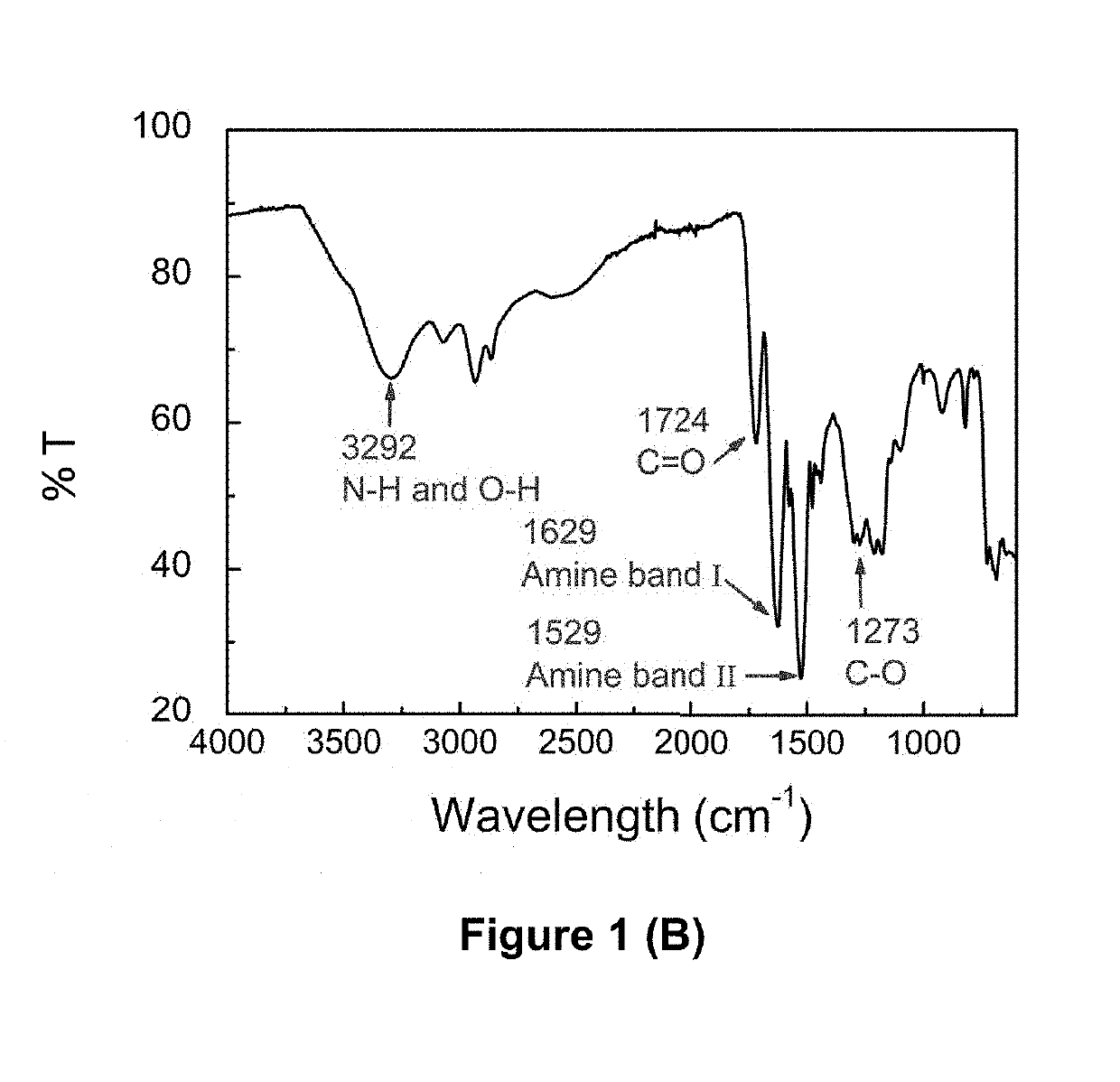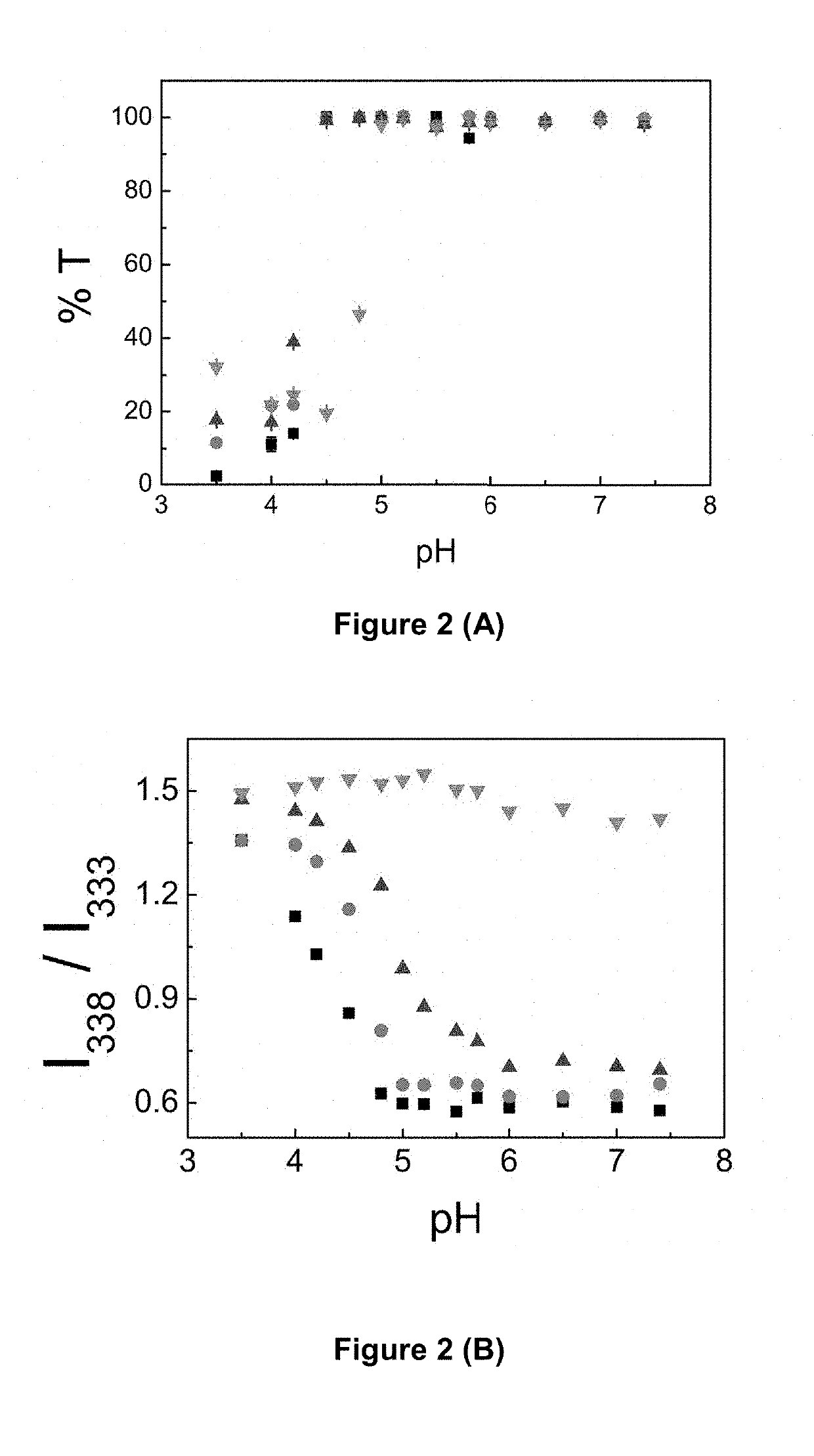Poly(l-lysine isolphthalamide) (PLP) polymers with hydrophobic pendant chains
- Summary
- Abstract
- Description
- Claims
- Application Information
AI Technical Summary
Benefits of technology
Problems solved by technology
Method used
Image
Examples
example 1
[0293]Formation of PLP grafted with NDA (C10) and other pendant hydrophobic chains including HDA (C7), TDA (C14) and ODA (C18) has been confirmed using 1H-NMR and FTIR spectra (FIG. 1).
example 2
[0294]pH dependent transmittance (FIG. 2A) and pH- and concentration-dependent hydrophobic association (FIGS. 2B & 2C) of the aqueous solutions of the PLP substituted with different degrees of NDA (%). As shown PLP-NDA displayed pH-dependent properties. The increase in pH at the onset of precipitation (pHp) and hydrophobic association (pHh), the widening of pH range for association and the decrease in CAC were achieved by grafting PLP with hydrophobic pendant side chains and increasing the degree of substitution (Table 1).
example 3
[0295]pH and concentration dependent particle size distribution of the polymers PLP and PLP-NDA (FIG. 3, Tables 2 & 3). The increase in the degree of substitution with hydrophobic pendant chains can lead to the decrease in particle size due to stronger hydrophobic interactions.
PUM
| Property | Measurement | Unit |
|---|---|---|
| Fraction | aaaaa | aaaaa |
| Fraction | aaaaa | aaaaa |
| Composition | aaaaa | aaaaa |
Abstract
Description
Claims
Application Information
 Login to view more
Login to view more - R&D Engineer
- R&D Manager
- IP Professional
- Industry Leading Data Capabilities
- Powerful AI technology
- Patent DNA Extraction
Browse by: Latest US Patents, China's latest patents, Technical Efficacy Thesaurus, Application Domain, Technology Topic.
© 2024 PatSnap. All rights reserved.Legal|Privacy policy|Modern Slavery Act Transparency Statement|Sitemap



